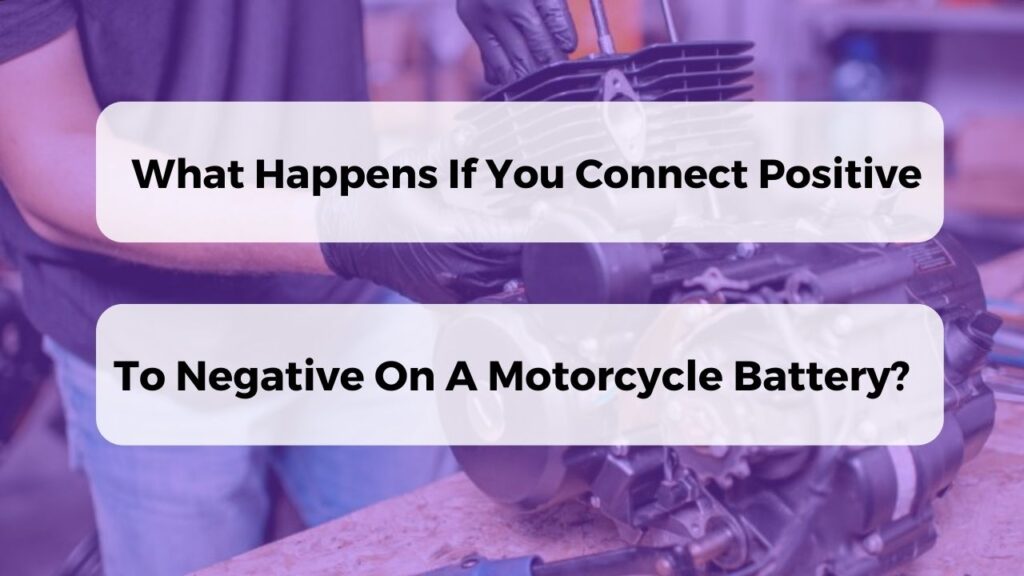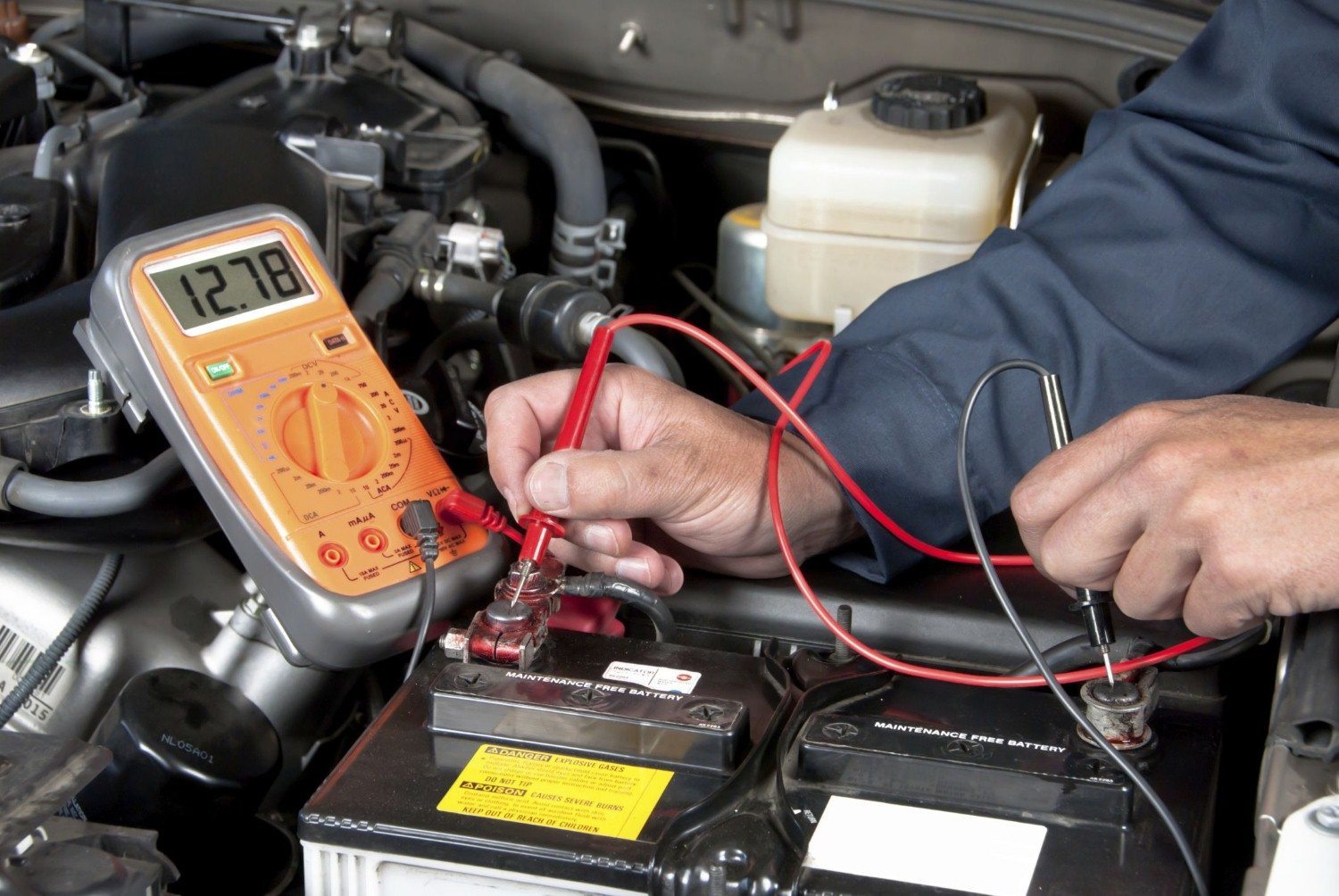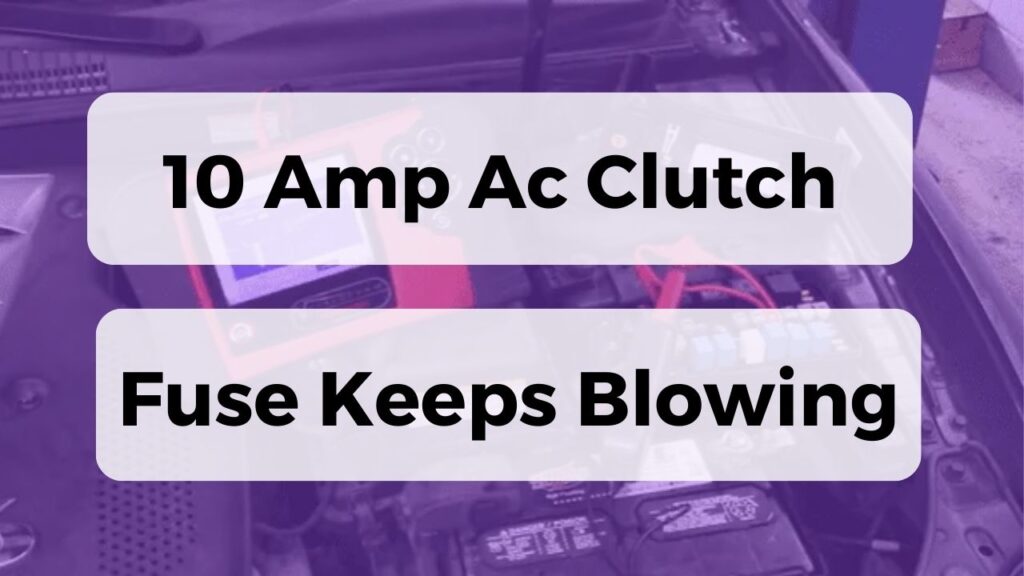In the intricate world of motorcycle batteries, there exists a delicate balance between positive and negative terminals. Like the gears of a well-oiled machine, these terminals must remain separate and connected in their designated manner.
However, should one dare to disrupt this harmonious arrangement by connecting positive to negative, catastrophic consequences may ensue. This article delves into the realm of motorcycle battery mishaps, exploring the potential ramifications that arise from such an ill-fated connection.
With an objective and technical approach, we will examine the importance of proper battery maintenance, steps to avoid erroneous connections, common mistakes to steer clear from, as well as essential battery safety tips. Additionally, we will shed light on the function of fuses and provide troubleshooting guidance for battery-related issues.
By comprehending the perils associated with connecting positive to negative on a motorcycle battery, riders can safeguard themselves against electrical havoc and ensure smooth rides ahead.
Key Takeaways Of What Happens If You Connect Positive To Negative On A Motorcycle Battery?
- Connecting positive to negative on a motorcycle battery can have catastrophic consequences, including damage to electronic components and potential explosions or fires.
- Regularly inspecting battery terminals for corrosion is crucial for optimal performance and longevity. Cleaning terminals with a wire brush and applying dielectric grease can prevent corrosion.
- Overcharging the battery can reduce its lifespan and increase the risk of explosions. Seek professional help for complex battery issues and ensure the technician has a deep understanding of different battery types and charging procedures.
- Proper storage and handling of motorcycle batteries is important to prevent accidents or damage. Follow the manufacturer’s instructions for maintenance and disposal, and always wear protective gear when working with batteries.
Understanding the Basics of Motorcycle Batteries
Understanding the basics of motorcycle batteries is essential in order to comprehend the potential consequences that may arise from connecting positive to negative terminals.
Motorcycle battery charging involves the use of electrolytes, typically consisting of battery acid and distilled water, to facilitate the chemical reactions necessary for energy storage and release. These chemical reactions are driven by the flow of electrons from the positive terminal (anode) to the negative terminal (cathode).
The battery acid levels play a crucial role in maintaining optimal performance, as they affect both the capacity and lifespan of the battery.
When positive is mistakenly connected to negative, it disrupts this electron flow and can lead to various issues such as damaging electrical components or causing an explosion due to excessive heat buildup.
Understanding these potential consequences is vital for the safe handling and maintenance of motorcycle batteries.
Potential Consequences of Connecting Positive to Negative
As a result of improperly connecting the terminals, an electrical circuit is formed that disrupts the normal flow of current within the motorcycle’s electrical system, akin to a turbulent river obstructed by a fallen tree. This can have serious consequences, including preventing accidents and causing extensive electrical damage.
- The battery may overheat: When positive and negative terminals are connected, it creates a short circuit that allows a large amount of current to flow uncontrollably. This excessive current can cause the battery to overheat, potentially leading to explosions or fires.
- Damage to electronic components: Connecting positive to negative can send a surge of electricity through the motorcycle’s wiring and electronic components. This sudden surge can overload and damage sensitive parts such as the ECU (Engine Control Unit), ignition system, or other vital electronics.
- Risk of injury: If an individual makes physical contact with both terminals while they are connected, it can lead to electric shocks resulting in burns or even cardiac arrest.
To prevent these hazardous outcomes from occurring, it is crucial to follow proper procedures when connecting motorcycle battery terminals.
Steps to Avoid Connecting Positive to Negative
To minimize potential hazards and protect against electrical damage, it is imperative to meticulously follow a specific set of guidelines when connecting the terminals of a motorcycle’s battery. Avoiding accidents and understanding battery polarity are key aspects in this process. Firstly, always ensure that the motorcycle’s ignition switch is turned off before attempting any battery-related tasks. Secondly, identify the positive and negative terminals on both the battery and the cables by their markings or color coding. For additional clarity, refer to the following table:
| Terminal | Color |
|---|---|
| Positive | Red |
| Negative | Black |
By adhering to these guidelines, one can prevent accidental short-circuits or reverse polarity connections that may lead to sparks, overheating, or even explosions. Properly connecting a motorcycle battery ensures its optimal performance and longevity. Transitioning into the subsequent section about the ‘importance of proper battery maintenance’, it is crucial to regularly inspect and maintain batteries for sustained reliability.
Importance of Proper Battery Maintenance
Proper maintenance of a motorcycle’s battery is essential for ensuring its longevity and reliable performance. Battery maintenance tips are crucial to prevent premature failure and extend the overall lifespan of the battery.
Regularly inspecting the battery terminals, cleaning them with a wire brush, and applying a thin layer of dielectric grease can help prevent corrosion and ensure optimal conductivity.
Additionally, checking the electrolyte levels regularly and topping up distilled water when necessary is important to maintain proper battery function.
It is also crucial to monitor the signs of a dying motorcycle battery, such as slow engine cranking or dimming headlights, as these indicate that the battery may need replacement soon.
By following these maintenance tips and being vigilant about recognizing signs of deterioration, riders can avoid common mistakes that could compromise their motorcycle’s electrical system.
Common Mistakes to Avoid
One commonly encountered mistake in maintaining a motorcycle’s battery is neglecting to regularly inspect the battery terminals for signs of corrosion. This oversight can lead to poor electrical conductivity and potential damage to the battery. Corrosion occurs when the terminals are exposed to moisture, causing a chemical reaction that produces a white or greenish buildup.
To prevent this from happening, it is important to clean the terminals regularly using a wire brush and a mixture of baking soda and water. Additionally, applying dielectric grease after cleaning can provide protection against future corrosion.
Another common error is overcharging the battery, which can result in reduced lifespan and even explosion due to excessive gas production. It is crucial to use an appropriate charger with automatic shut-off features and follow manufacturer guidelines.
By avoiding these common mistakes and taking precautionary measures, such as wearing protective gloves and eyewear during maintenance, motorcycle owners can ensure optimal battery performance while minimizing risks.
Seeking professional help for complex issues beyond regular maintenance is advisable.
Transition sentence: In cases where more advanced knowledge or technical expertise is required, seeking professional assistance becomes essential in ensuring proper care of one’s motorcycle batteries without compromising safety or functionality.
Seeking Professional Help
Seeking professional assistance ensures that complex issues related to the care of motorcycle batteries are addressed with expertise and precision, but what factors should be considered when choosing a qualified technician?
When seeking professional advice for motorcycle battery-related problems, it is crucial to consider the technician’s experience and knowledge in handling battery issues specific to motorcycles. A qualified technician should have a deep understanding of different battery types, charging procedures, and troubleshooting techniques. Additionally, they should possess the necessary tools and equipment required for diagnosing and fixing battery problems.
It is also important to choose a technician who keeps up with the latest advancements in battery technology. By seeking assistance from a knowledgeable professional, riders can rest assured that their battery-related concerns will be handled effectively. This ensures optimum performance and longevity of the motorcycle’s battery system.
Transitioning into the next section about ‘battery safety tips,’ riders can further enhance their understanding of proper battery maintenance practices.
Battery Safety Tips
This discussion will focus on three key points regarding battery safety:
- Wearing protective gear, such as gloves and goggles, is crucial to prevent potential injuries while working with batteries.
- Storing batteries properly is important. They should be kept in a cool and dry place away from flammable materials to prevent accidents or damage caused by leaking or exploding batteries.
- Handling batteries with care involves several precautions. This includes avoiding unnecessary physical impacts, ensuring proper connections when charging or using them, and following manufacturer’s instructions for maintenance and disposal.
Wearing Protective Gear
Wearing protective gear while riding a motorcycle is essential for ensuring the safety and well-being of the rider. To effectively protect themselves, motorcycle riders should consider the following safety precautions:
- Helmet: A helmet is crucial in safeguarding the head and brain from potential injuries during accidents.
- Jacket and pants: Wearing abrasion-resistant jackets and pants made of materials like leather or Kevlar offers protection against road rash.
- Gloves: Motorcycle gloves provide grip, protect hands from debris, and reduce the risk of severe hand injuries.
- Boots: Sturdy, non-slip boots with ankle support prevent foot injuries and offer stability while riding.
- Eye protection: Goggles or visors shield riders’ eyes from wind, dust, insects, and UV rays.
By adhering to these protective gear importance measures and taking appropriate safety precautions, motorcyclists can significantly reduce their vulnerability to accidents.
Transitioning into the subsequent section about storing batteries properly ensures a comprehensive understanding of motorcycle battery maintenance.
Storing Batteries Properly
Proper storage techniques for motorcycle batteries are crucial to maintain their performance and prolong their lifespan. Battery disposal is an important aspect of battery storage that should not be overlooked. It is essential to follow local regulations and dispose of old or damaged batteries safely and responsibly.
Additionally, proper charging methods play a significant role in preserving the battery’s longevity. Overcharging can lead to damage, while undercharging can result in sulfation, which decreases battery capacity over time. Therefore, it is advisable to use a smart charger with automatic shut-off capabilities or a trickle charger to ensure optimal charging without overtaxing the battery.
By adhering to these storage guidelines, motorcyclists can maximize the lifespan and performance of their batteries.
Transition: Handling batteries with care is another critical aspect of maintaining optimal battery performance and safety.
Handling Batteries with Care
One crucial aspect to consider when handling batteries is treating them like fragile glassware.
Battery storage and disposal require careful attention to prevent accidents and environmental damage. When storing batteries, it is important to keep them in a cool, dry place away from direct sunlight or extreme temperatures. This helps maintain the battery’s performance and prolong its lifespan.
Additionally, it is essential to dispose of used batteries properly by following local regulations and guidelines. Many communities have designated recycling centers where batteries can be safely disposed of or recycled to minimize their impact on the environment.
Understanding the function of fuses is another vital step in ensuring battery safety and preventing potential damage or electrical hazards when using a motorcycle battery.
Understanding the Function of Fuses
The primary purpose of fuses in a motorcycle is to protect the electrical system from damage caused by excessive current flow. Fuses act as a safety mechanism by breaking the circuit when there is an overload or short circuit, preventing damage to sensitive components and potential fires. The importance of fuse placement cannot be overstated; they should be strategically positioned along the electrical system to ensure maximum protection. Different types of fuses are available for motorcycles, including blade-type fuses and glass tube fuses, each with its own rating and specifications. Blade-type fuses are commonly used due to their compact size and easy replacement. Glass tube fuses offer higher voltage ratings and are often found in older models. Understanding the function of these fuses is crucial for proper maintenance and troubleshooting battery-related issues. Transitioning into the subsequent section on troubleshooting battery-related issues, it is essential to have a comprehensive understanding of how different components interact within the motorcycle’s electrical system.
Troubleshooting Battery-related Issues
To effectively diagnose and resolve issues related to the motorcycle’s battery, a systematic troubleshooting approach must be employed. This involves a series of steps aimed at identifying and rectifying any problems that may hinder the battery charging process or reduce its lifespan.
The following are key points to consider when troubleshooting battery-related issues:
- Check for loose connections or corroded terminals.
- Test the voltage output of the battery using a multimeter.
- Inspect the wiring and circuitry for any damage or faults.
By following these steps, one can identify common issues with battery charging and take appropriate measures to rectify them, thus maximizing the battery’s lifespan.
In conclusion, understanding how to troubleshoot battery-related problems is crucial for maintaining an optimal charging system in motorcycles.
Conclusion and Final Thoughts
In conclusion, a thorough understanding of troubleshooting battery-related issues is essential for ensuring the longevity and efficiency of a motorcycle’s charging system. By properly diagnosing and addressing battery problems, riders can effectively prolong their battery life and avoid potential dangers associated with improper maintenance.
Regularly checking the battery’s voltage levels, inspecting connections for corrosion or loose fittings, and testing the charging system can help identify any issues that may be affecting the battery’s performance. Additionally, following manufacturer recommendations regarding proper storage and usage can further extend the lifespan of the battery.
Neglecting to address battery-related issues can lead to various consequences. A poorly maintained or faulty battery may fail to start the motorcycle or cause intermittent electrical failures while riding. Moreover, ignoring warning signs such as dimming headlights or slow cranking can indicate an impending failure that could leave riders stranded in inconvenient locations.
Therefore, it is crucial for motorcycle owners to prioritize regular maintenance and prompt troubleshooting of battery-related issues to maximize both safety and longevity on the road.
Frequently Asked Questions
How do I know if I’ve connected the positive and negative terminals of my motorcycle battery incorrectly?
To prevent incorrect battery connections on a motorcycle, it is crucial to pay attention to the polarity of the terminals. Common signs of incorrect connections include a lack of electrical power or damage to the electrical system.
Can connecting the positive and negative terminals incorrectly cause damage to other electrical components of the motorcycle?
Incorrectly connecting the positive and negative terminals of a motorcycle battery can cause damage to other electrical components. Common signs of such damage include blown fuses, burnt wires, malfunctioning electronics, and even complete failure of the electrical system. Proper terminal connection is crucial to avoid these issues.
What precautions should I take before attempting to connect or disconnect my motorcycle battery?
Precautions and safety measures should be taken before attempting to connect or disconnect a motorcycle battery. These include wearing protective gloves and eyewear, ensuring the engine is off, and following the manufacturer’s instructions to avoid electrical shocks or damage to the battery or other components.
Are there any specific types of batteries or motorcycles that are more prone to issues when connecting positive to negative?
Battery types and common motorcycle battery issues are not directly correlated to the consequences of connecting positive to negative terminals. However, improper connection can lead to electrical system damage, including blown fuses or fried components.
What should I do if I accidentally connect the positive and negative terminals incorrectly?
Common mistakes when connecting the positive and negative terminals incorrectly on a motorcycle battery can lead to various issues. Troubleshooting steps include immediately disconnecting the battery, checking for blown fuses or damaged components, and properly reconnecting the terminals to avoid further damage.
Conclusion
In conclusion, connecting the positive and negative terminals of a motorcycle battery can have severe consequences. The electrical current will flow in the wrong direction, potentially damaging the battery and causing a short circuit.
To avoid this mistake, it is crucial to understand the basics of motorcycle batteries and follow proper maintenance procedures. Remember to always double-check the polarity before connecting any cables.
Just as a misplaced word can change the meaning of a sentence, an incorrect connection can have detrimental effects on your motorcycle’s electrical system. Stay vigilant and prioritize battery safety to ensure optimal performance and longevity.



